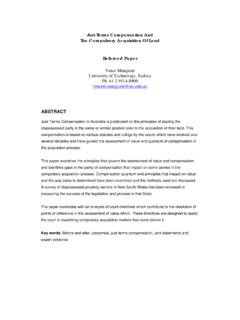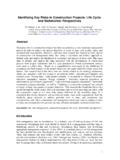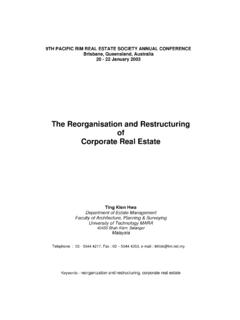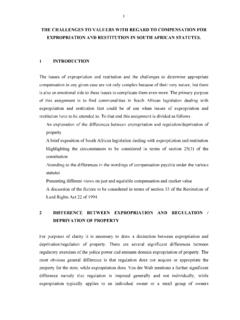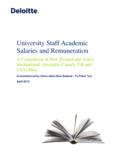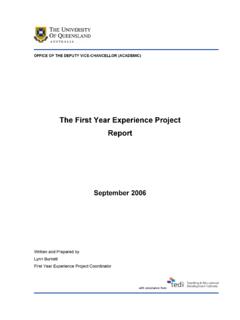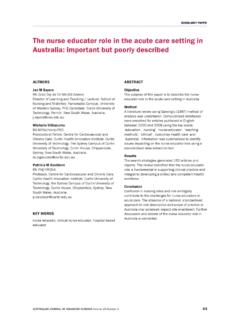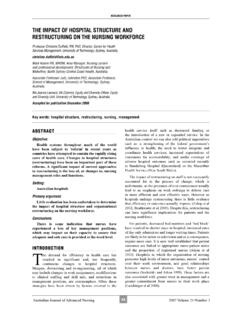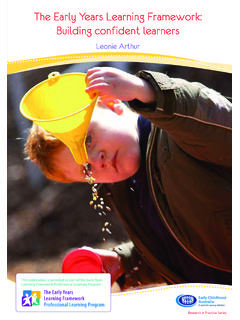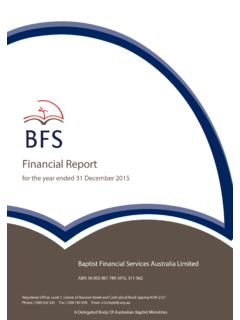Transcription of ASSESSING THE IMPORTANCE OF PROPERTY …
1 Pacific Rim PROPERTY Research Journal, Vol 12, No 1 22 ASSESSING THE IMPORTANCE OF PROPERTY DEVELOPMENT RISK FACTORS GRAEME NEWELL and MARK STEGLICK university of western sydney ABSTRACT PROPERTY development makes a significant contribution to the Australian PROPERTY industry and economy. However, PROPERTY development is inherently risky, with a number of risks evident throughout the PROPERTY development process. From a survey of leading PROPERTY developers in Australia, the IMPORTANCE of 34 PROPERTY development risk factors is assessed. The most important PROPERTY development risk factors identified were environmental risk, time delay risk and land cost risk.
2 Keywords: PROPERTY development, risk factors, PROPERTY development stages, environmental risk, time delay risk, land cost risk INTRODUCTION The PROPERTY development industry includes a wide range of organisations and individuals involved in developing and operating PROPERTY to meet the housing, employment and social needs of communities (UDIA, 2003). Importantly, PROPERTY development makes a significant contribution to the Australian PROPERTY industry and economy, with Table 1 profiling the contributions of the NSW and Queensland PROPERTY development sectors1 (Ernst & Young, 2002, 2003). In 2001-02, the NSW PROPERTY development sector had a total annual turnover of $ billion, directly generating $ billion in added value and employing over 181,000 staff.
3 The PROPERTY development sector contributes 7% to the NSW economy (gross state product), being the 5th largest sector contribution, only exceeded by manufacturing (12%), ownership of dwellings (11%), PROPERTY and business services (10%), and finance and insurance (9%). Similarly, the PROPERTY development sector contributes 6% to NSW employment, being the 6th largest sector employer. When the flow-on effect into other sectors of the NSW economy is factored in, the total added value contribution to the NSW economy by the PROPERTY development sector is $ billion and employment for over 444,000 (Ernst & Young, 2003). 1 Reports are only prepared for NSW and Queensland sectors Pacific Rim PROPERTY Research Journal, Vol 12, No 1 23 Table 1 : PROPERTY development sector profile in Australia : 2001-02 NSW profile Total PROPERTY development sector turnover : $ billion Contribution by NSW to Australian PROPERTY development sector turnover : 34% Direct added value to NSW economy (GSP) : $ billion Contribution to NSW economy (GSP) : 7% (5th largest sector contribution) Directly employs over 181,000 (full-time equivalents).
4 Over $ billion in wages Contribution to NSW employment : 6% (6th largest sector contribution) Flow-on contribution : $ billion in added value and 262,000 jobs Total NSW PROPERTY development sector contribution : $ billion in added value, employing 444,000 Queensland profile Total PROPERTY development sector turnover : $ Contribution by Queensland to Australian PROPERTY development sector turnover : 19% Direct added value to Queensland economy (GSP) : $ billion Contribution to Queensland economy (GSP) : 7% (4th largest sector contribution) Directly employs over 116,000 (full-time equivalents) Contribution to Queensland employment : 8% (5th largest sector contribution) Total Queensland PROPERTY development sector contribution : $ billion in added value, employing 220,000 Australian profile Total PROPERTY development sector turnover : $106 billion Source: Extracted from Ernst & Young (2002, 2003) Pacific Rim PROPERTY Research Journal, Vol 12, No 1 24 Similar significant contributions (see Table 1) are also seen from the PROPERTY development sector in Queensland (Ernst & Young, 2002).
5 With NSW contributing approximately 34% to Australian turnover, the annual turnover of the Australian PROPERTY development sector is over $106 billion (Ernst & Young, 2003). Table 2 presents the performance analysis at December 2004 for the listed PROPERTY development sector compared to the other major asset classes (UBS, 2005). The PROPERTY development sector is clearly more volatile (annual risk = ) than the LPT sector ( ) and the stockmarket ( ). Strong risk-adjusted performance is seen from a number of PROPERTY developers (eg: Sunland, Village World and FKP), but high levels of volatility are also evident in this individual PROPERTY developer performance. The potential significant risk-adjusted performance contribution by PROPERTY development to LPTs via the stapled securities structure has also been identified (Tan, 2004).
6 Overall, PROPERTY development is inherently risky, with high barriers to entry reflecting the cyclic and capital intensive nature of the sector, and the typically slow payback period. This sees a number of risks evident throughout the PROPERTY development process and the need for effective risk management strategies for successful PROPERTY developments. Given the significance of the PROPERTY development sector in Australia and internationally, it is important to identify the various PROPERTY development risks and the IMPORTANCE of these risk factors in the PROPERTY development process. As such, this paper presents the results of a survey of leading PROPERTY developers in Australia to assess the IMPORTANCE of specific PROPERTY development risk factors in the PROPERTY development process.
7 PROPERTY DEVELOPMENT RISK All aspects of PROPERTY investment risk have received extensive coverage for many years; this includes the risk-reduction effects of PROPERTY in a portfolio, portfolio risk reduction via PROPERTY diversification, risk premiums for PROPERTY sectors and the impact of valuation-smoothing on PROPERTY risk (Booth et al, 2002). However, it has been recognised for many years that research into PROPERTY development risk is limited (Whipple, 1988); particularly given the role of the PROPERTY cycle and its strategic implications for PROPERTY and PROPERTY development (Pyhrr et al, 1999). Pacific Rim PROPERTY Research Journal, Vol 12, No 1 25 Table 2 : PROPERTY developer and related sector performance : Dec.
8 20041 Sector Market cap ($B) Average annual total return 1Y 3Y 5Y Annual2 risk Sharpe2,3 index PROPERTY development $ NA (4) Lend Lease $ Australand $ FKP $ AV Jennings $ Sunland $ Village Life $ NA NA NA NA Village World $ LPTs $ (1) Stockland $ Mirvac $ Multiplex $ NA NA NA NA Shares $ (2) Bonds NA (3) Cash NA (5) 1.
9 Westfield is not included in performance analysis due to stapling of Westfield Holdings, Westfield Trust and Westfield America Trust in 2004. 2. Risk measures based on 3-year monthly returns. Risk is calculated as the standard deviation of monthly returns over this three-year period. 3. Ranking based on risk-adjusted performance for major asset classes is given in brackets. Source: Authors compilation from UBS (2005) Pacific Rim PROPERTY Research Journal, Vol 12, No 1 26 With the chronological stages in the PROPERTY development process being broadly identified (eg: Cadman and Topping, 1995; Miles et al, 2000), most approaches concentrate on measuring PROPERTY development risk, rather than identifying or prioritising key risk elements in the PROPERTY development process.
10 These approaches largely concentrate on feasibility analysis and cashflow analysis (eg: Byrne, 1996; Cadman and Topping, 1995), with only limited attention given to PROPERTY development risk management (eg: Cadman and Topping, 1995; Miles et al, 2000). A broad classification of PROPERTY development risk into four categories (commercial, construction, land, social) and 21 sub-categories has also been developed (Dullisear, 2001). Other studies have largely concentrated on specific aspects of PROPERTY development risk such as development financing risk (Markham, 2001) and interest rate risk (Cameron, 1990). PROPERTY development risk is only briefly addressed in the API s Professional Practice Standards via guidance note (feasibility studies) and guidance note ( PROPERTY development management) (API, 2004).
